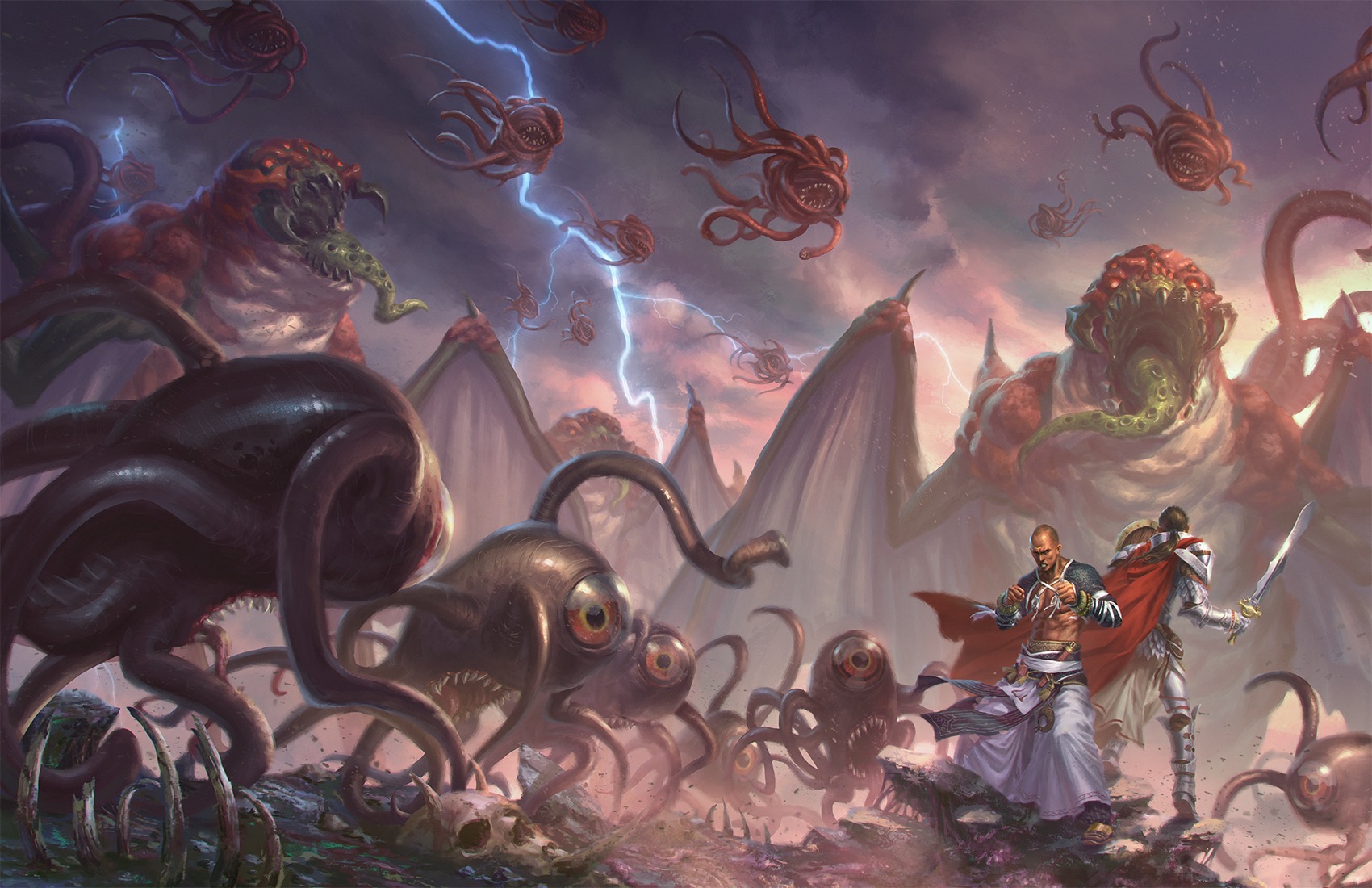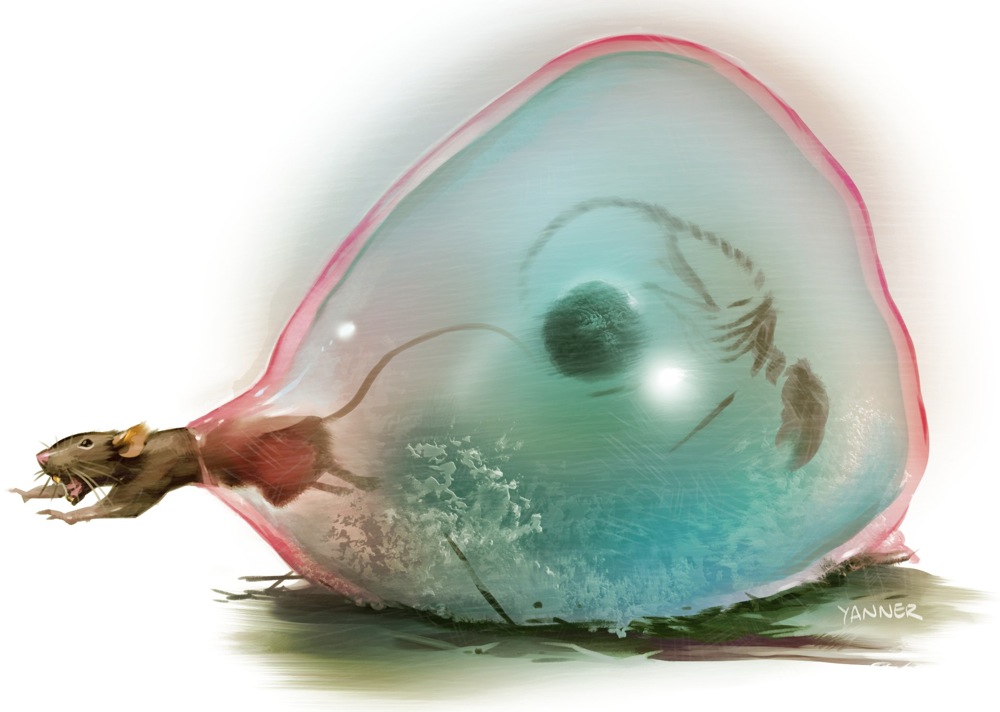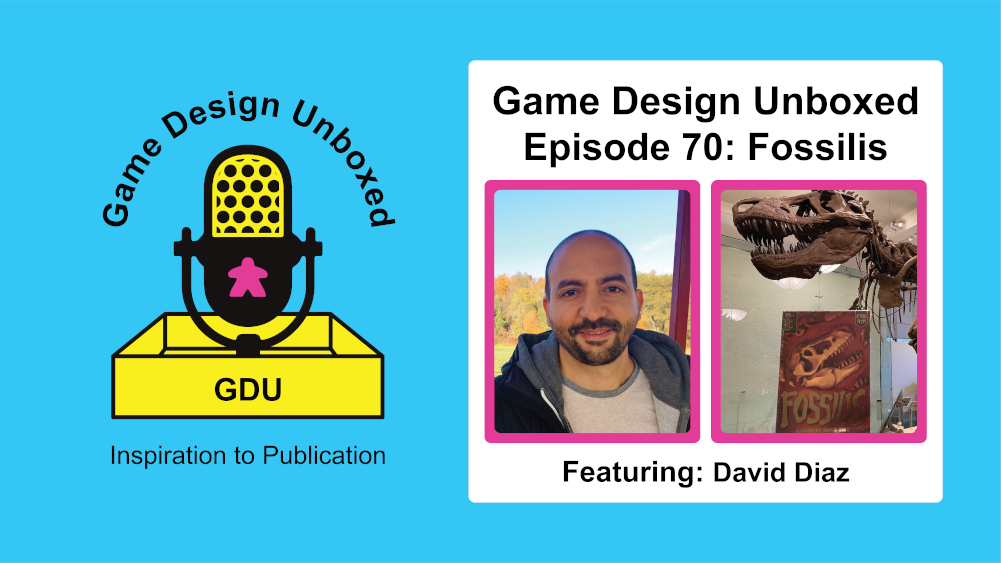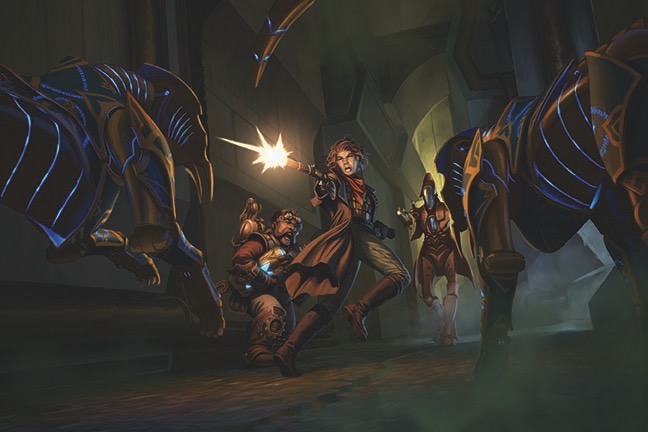Hey there, spacefaring adventurers! Are you looking for something to liven up your journey among the stars? Do the walls of unfeeling steel and plastic make you feel like you’re suffocating? We have the solution for you! Try our newest and product, Gene Soup!
Gene Soup has our patented Do Anything Biotechnology, which means it can be anything you want! Use it to heal wounds, regrow limbs, or stick a load of it into a vat and grow yourself that shiny new shoulder-mounted bile launcher that the government won’t let you buy. What do they know, anyway? Heck, you can even eat the stuff if you want!
Gene Soup: It can get you lasers, lunch, and limbs. Call your doctor and demand the soup today!
Hello and welcome to Eldritch Excursion, the blog that crawled its way out of the primordial ooze to learn about the intersections of flavor and mechanics. Today I’ll be continuing my crusade to seize the means of evolution by homebrewing more squishy biotech things for Starfinder. After all, there’s no reason to stop until I can create a one hundred percent organic campaign setting, and there’s nothing more foundational to an adventuring party than credits. Digital, unliving, unfeeling credits. And that simply will not do.
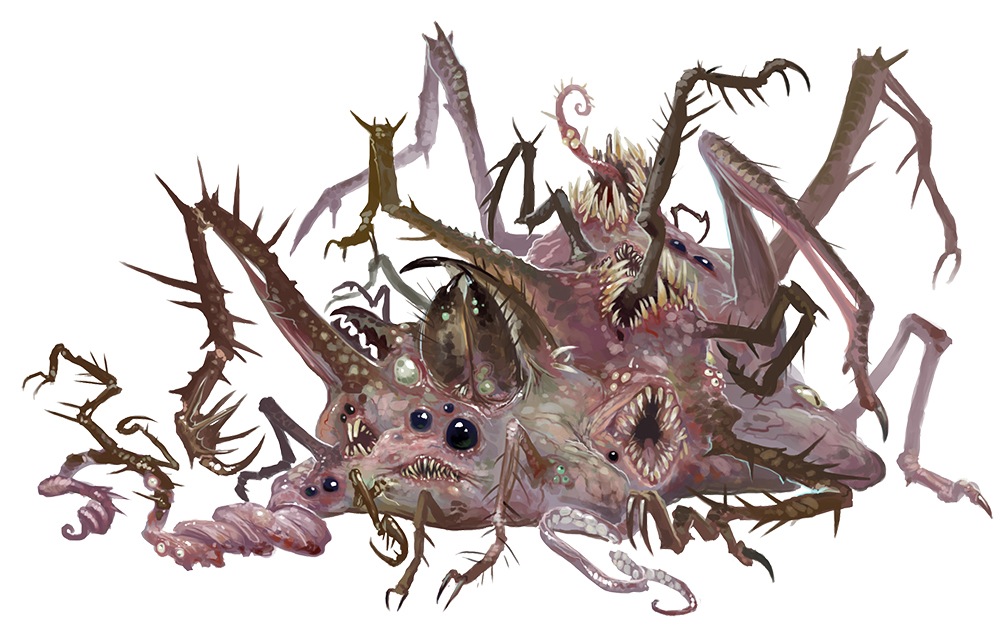
Warning: Improper use or consumption of Gene Soup can result in nausea, blindness, death, undeath, redeath, growing additional limbs, becoming nothing but a mass of additional limbs, developing a god complex, developing a complex god, and initiating the Apocalypse of Flesh. Please consult a doctor if any of these symptoms occur.
UCC
A universal cell cluster, sometimes called UCC or “gene soup,” is an experimental method of generating living matter. One UCC is made up of a cluster of cells that have the potential to grow into muscles, brain tissue, nerve endings, plant matter, or any other known kind of living tissue. UCCs can be used to counteract blood loss, repair damaged organs, and even regrow lost limbs entirely, making them invaluable for use in the field of medicine. A weaponsmith with the proper facilities can also use UCCs and the proper genetic sequences to create biological weapons, both handheld and independent. Even in the hands of an untrained civilian or underequipped soldier, UCCs can be used to patch wounds or mixed with food to create edible matter. In its base form, UCCs resemble a sort of gelatinous soup with the texture of fine grain.
Much like their mechanical counterpart, UCCs can be used as a raw material to construct a variety of tools and weapons at a cost equal to the item’s cost in credits. However, they can only be used to create living weapons and armor, biotech augmentations, and other items made out of living material.
UCCs are durable, but still require a suitable environment. Exposing them to a harmful environment such as extreme heat or cold, radiation, or the vacuum of space does not destroy them, but it causes them to permanently change into a form of life that functions exclusively to survive under those exact conditions. This renders them useless both as a tradable currency and as a material for creation. As a result, some care must be taken in their transportation and storage.
UCCs can also be used for simple medical purposes, allowing direct application of raw cultures to act as dose of sprayflesh. This requires a number of UCCs equal to the cost in credits of spray flesh, even if an untrained user is using it as a medpatch.
In an emergency, UCCs can serve as food. Eating it raw is inefficient, costing 5 UCCs to count as one day’s worth of rations, but the adaptive culture can feed any creature that consumes living matter, including undead. When properly cultivated, 1 UCC can grow into a long-lived sluglike creature that’s rich in nutrients and counts as an R2E.
A Truly Living Economy
UCCs are comparable to credits in raw value, but their specific utility means they pose no threat to overtaking UPBs as a universal currency. Instead, they find use among fringe scientists and naturalist explorers. The potential for innovations in the medical fields attracted the interest of many corporations, but an incident involving an escaped vat-grown monstrosity gave most investors cold feet. Despite this poor early impression UCCs still find use among biotech enthusiasts that are careful enough to not test the limits or brave enough to face the consequences.
Rumors persist that underground “Red Markets” exist outside the influence of law and regulation, where UCCs are used to make low quality replacement organs on the cheap and especially unscrupulous bioengineers trade in vat-grown servants. In truth, the number of UCCs needed to grow a fully sentient being from scratch makes the process prohibitively expensive, meaning it’s more likely used as a means of making money while disposing of unwanted test subjects.
With the moderate difficulties of maintaining a store of UCCs, clever bioengineers have found a way to use the material’s properties in their favor. By carefully guiding the growth of these cell cultures into simple creatures, they were able to create living companions that were far more capable of protecting their payload while losing minimal resources from harvesting. These “gene troves” make for functional storage as well as low-maintenance pets for eccentric scientists.
Fleshling Genetrove Companions
Designed to serve as living archives for cell culture investments, these creatures tend to spend their short lives being stuffed with UCCs and exchanged or harvested for useful genetic material. They can vary wildly in appearance, but the most common breeds resemble larger versions of simplistic cell structures, appearing as squox-sized amoeba with flesh-toned bodies.
Fleshling Genetrove [Levels 1-20]
Tiny abberation
Senses darkvision 60 ft
Good Save Fort; Bad Saves Ref, Will
Speed 20ft
Melee Attack pseudopod (B)
Space 2 1/2 ft. Reach 0 ft.
Ability Modifiers Con, Wis
Special Abilities
Reconstitution (Ex) A fleshling genetrove is essentially a living collection of multipurpose biomass. Because of this, you must use UCCs to purchase or increase the level of a fleshling genetrove companion. With one hour of work at a suitable laboratory, you may break down the fleshling’s biomass, regaining 90% of its total value in UCCs and killing it in the process. It also increases by one size at level 4 and at each 4th level afterwards thanks to the bulk of its additional UCCs.
Versatile Adaptation (Ex) The instability of the fleshling genetrove’s biology allows it to change its body to adept to adverse conditions. If exposed to an underwater environment, it exchanges its land speed and ability to breathe air for a swim speed and the ability to breathe water. These changes reversed if it is ever removed from the water. If it takes energy damage, loses any other resistance gained from this ability and instead gains resistance to that energy type equal to 2 + its level. These changes happen automatically over the course of 3 rounds.
Well how about that? Now we have the beginnings of a true meat-based society. And plant-based, if that’s more your thing. Just as long as it is or has been alive, it’s all on the table and I’m not going to judge. Come back next time and I’ll tell you a surefire way to beat a medusa in a staring contest.

